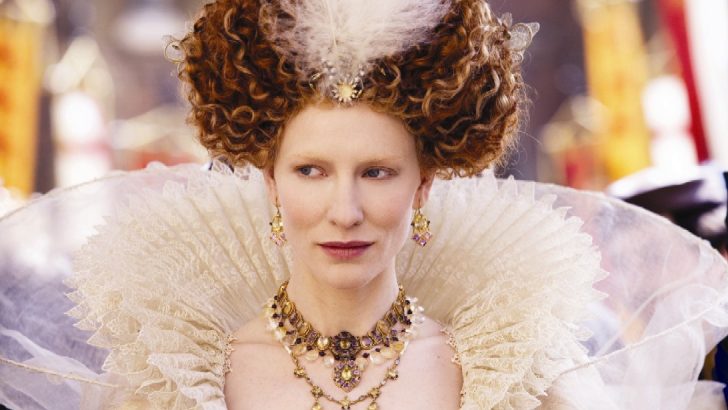Luther and the Tudors have been perennial subjects for the screen, writes Aubrey Malone
The first film made about The Reformation was a 1928 silent one called Luther, directed by Hans Kyser. It was a short account of Martin Luther’s life with an American voiceover. Four years later Charles Laughton won an Oscar for a roistering depiction of Henry V111 in The Private Life of Henry V111. He chewed the scenery as well as the chickens. It was the first time a Briton won an Oscar. The film had international ‘legs’ and was a success stateside as well. His real life wife Elsa Lanchester was excellent as Ann of Cleves.
We had to wait until 1953 before Luther appeared in a ‘talkie’. That year Irving Pichel directed Martin Luther. This was filmed in conjunction with the Lutheran Church, which meant there was less chance of a Hollywood element pervading. Niall MacGinnis played the title role.
The film begins with him nailing the famous 95 Theses onto the door of the Castle Church in Wittenberg. It goes on from there to see him defending himself on charges of heresy as the ripples from his actions spread far and wide. It was banned in countries like Peru and the Phillippines but was admired for its near-documentary approach to its subject.
Divorce
A Man for all Seasons , directed by Fred Zinnemann in 1966 from a Robert Bolt screenplay, is probably the film people are most familiar with on the Reformation theme. Paul Scofield played Thomas More, the Lord Chancellor who stands up to Henry VIII (Robert Shaw) when his efforts to divorce Catherine of Aragon, his wife of twenty years, to marry Ann Boleyn are denied to him both by church and civil law.
He breaks with Rome and changes the law to make the divorce legal but what he doesn’t bank on is More’s dogged refusal to endorse such sea-changes. Henry isn’t used to anyone saying no to him so he rages. More is imprisoned for refusing to swear an oath of supremacy to king over Pope, and for rejecting the annulment of his marriage.
The main animus of the film results from the almost mischievous exchanges between the two men as England becomes a kind of rudderless ship under Henry’s megalomanic exertions. More’s decision to stand by his principles rather than bowing to the monarch’s wishes eventually costs him his life. Nothing other than unequivocal support will do Henry. He’s imprisoned and subsequently beheaded.
More was beatified in 1886 and canonised in 1935. Scofield won an Oscar for the role and Shaw was nominated for one. Both of them acted their socks off. Shaw seemed like an ode to every appetite going while Scofield matched him scene for scene with a more understated performance. The film also won Best Picture that year.
Richard Burton played Henry VIII in Anne of the Thousand Days in 1969. Genevieve Bujold was Anne (Boleyn). Both of them were nominated for Oscars but neither won. Burton never won an Oscar and grudged Scofield – a rival ‘Shakespearean’ actor – his one. The only Oscar the film won was for Costume Design. That was appropriate: it was all dressed up with nowhere to go.
Keith Mitchell played Henry VIII in a film of the BBC series Henry VIII and his Six Wives. The TV version ran for 540 minutes. The film version had its work cut out trying to squeeze everything into two hours. It was an impossible task. Most of the time is – understandably – devoted to Ann Boleyn but this was an opportunity lost to tell us something about the other wives as well. It made the title something of a misnomer.
Stacy Keach played Martin Luther in Luther, a 1973 film based on a play by John Osborne. It was a nervous performance and not helped by an Irish tinge to his accent. Ten years later Jonathan Pryce played him in Martin Luther, Heretic.
Arrested
Cate Blanchett played Elizabeth Tudor in Elizabeth in 1998. Set in 1558, it began with the death of the Catholic Queen Mary, who restored papal jurisdiction to Britain five years earlier. Before Mary died she was advised to have her Protestant half-sister Elizabeth, the heir to the throne, arrested on trumped-up charges and executed. The reason this was suggested was so it wouldn’t fall into Protestant hands. But Mary refused to take such a course of action, and after she died, Elizabeth succeeded her.
As Blanchett settles into her new role in the film she’s faced with resistance from those anxious to restore the Catholic lineage by fair means or foul. She’s also being pressured to marry and produce a Protestant heir. Her lover, however, isn’t seemed suitable. Tired of the advice of those around her, she eventually decides to rule in her own way – from the heart rather than the head. In matters of love she becomes defiant as well, remaining on the throne as ‘the Virgin Queen.’
In 2002 Liam Neeson narrated perhaps the most corrosive documentary on the Reformation we’ve seen thus far. Cassian Harrison’s Martin Luther resisted few opportunities to make melodrama from church corruption, even going so far as to give the film a ‘horror movie’ soundtrack when liturgical scenes were being shown. The Papacy in the documentary is a revolting spectacle.
Joseph Fiennes was Luther in Luther the following year. This film took place over three decades but none of the characters seemed to age. It also contained some anachronisms. Luther quotes the Bible by chapter and verse, for instance, although versification wasn’t introduced until 1546, five years after he died.
There are also some chronological inaccuracies in his preaching. He does most of it walking around rather than from the pulpit, the normal procedure for the time. The congregation also sit in pews but standing was the more common practice then. Despite its two-hour length, the film only features Luther delivering a few of his Theses.
The recent BBC mini-series Wolf Hall explored similar territory to A Man for all Seasons but the characterisation negotiated a 180-degree turn from the 1966 film. It was based on the Booker-winning novel by Hilary Mantel, who believes the Catholic church is “not an institution for respectable people”.
Wolf Hall turned the More of Fred Zinnemann’s film from an idealist willing to die for his beliefs into a self-satisfied prig and a misogynist to boot. Cromwell, meanwhile – the man who was instrumental in organising the executions both of More and Ann Boleyn – comes across almost as cuddly as he plots his way to power.
One has to emphasise that we’re dealing with fiction here, though the element of score-settling on Mantel’s part can’t be gainsaid. Her re-writing of history discounts the fact that Cromwell appears to have been a torturer just as much as his namesake from another era, Ireland’s special friend Oliver. Her revisionist emphasis would seem to cohere with a contemporary media trend towards carpet-bombing of Catholic heroes. Revisionists like to demythologise sacred cows. It’s perhaps what they do best, especially with the safety valve of a quasi-fictive rear view mirror that goes back 500 years.
The Catholic Church in recent times seems to have become something of a stomping ground for anyone with a grudge to indulge or a martyr to extirpate. In the present instance, Thomas More – played in the series by Anton Lesser – became such a martyr, to celluloid as well as the execution chamber.


 Aubrey Malone
Aubrey Malone Cate Blanchett as Elizabeth Tudor
Cate Blanchett as Elizabeth Tudor